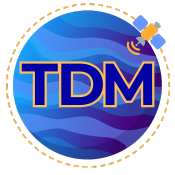Visual Suite 2.0 brings together productivity, design, and coding tools in one place, empowering the creativity of millions of users worldwide.

During the Canva Create 2025 event held on April 10 in Los Angeles, the popular design platform introduced Visual Suite 2.0, its most ambitious update since its founding. This new version is fully powered by artificial intelligence (AI) and designed to unify creativity and productivity in one seamless experience.
“AI will not replace creative jobs. On the contrary, it’s driving new careers, emerging industries, and innovative business models,” said Cameron Adams, Canva’s co-founder and Chief Product Officer.
🧠 The 4 Major Innovations in Canva Visual Suite 2.0:
- All-In-One Visual Suite
A collaborative workspace where users can create presentations, websites, animations, and documents—without switching apps or formats. Perfect for teams aiming for speed, efficiency, and smoother collaboration. - Canva Sheets
A visual upgrade for spreadsheets. It integrates data from tools like Salesforce, HubSpot, and Google Analytics, then turns it into real-time charts, infographics, and dashboards—automatically—with AI-powered features like Magic Write and Magic Insights. - Canva AI
A conversational AI assistant with voice capability that can design, generate images, write content, and even produce code—natively within the Canva editor, with no need for third-party tools. - Canva Code
Programming made accessible for everyone. This tool lets users create interactive elements and explore ideas through code—without needing a technical background.
🔒 Security, Copyright, and the Creative Future
Canva also reaffirmed its commitment to privacy and data control with Canva Shield. Additionally, it launched a $200 million fund to reward creators contributing content to the platform. These creators can choose whether to allow their work to train AI models and receive monthly royalties based on usage.
With over 230 million monthly users, including 25 million paid subscribers, Canva is a key tool for both enterprises and educators. The platform is used by 95% of Fortune 500 companies, as well as 90 million students and teachers across more than 16,000 educational institutions worldwide.
“Our goal is to make creativity, communication, and innovation accessible to everyone—no matter their technical skills. That’s the true power of AI-driven design,” Adams concluded.





